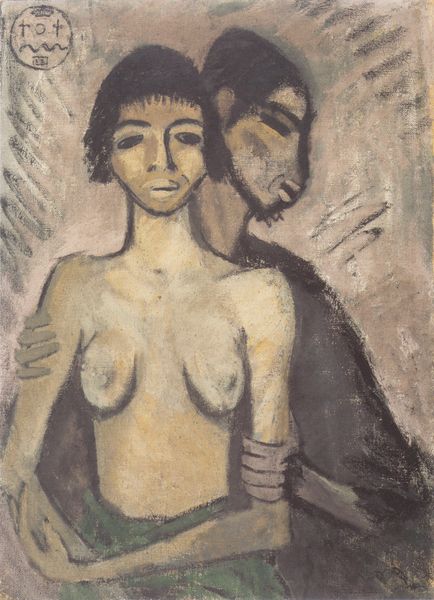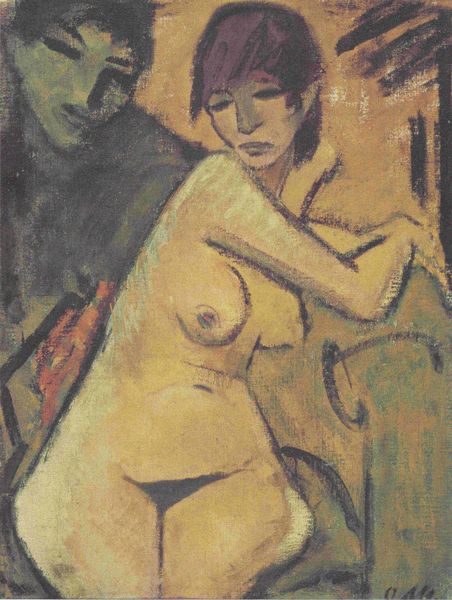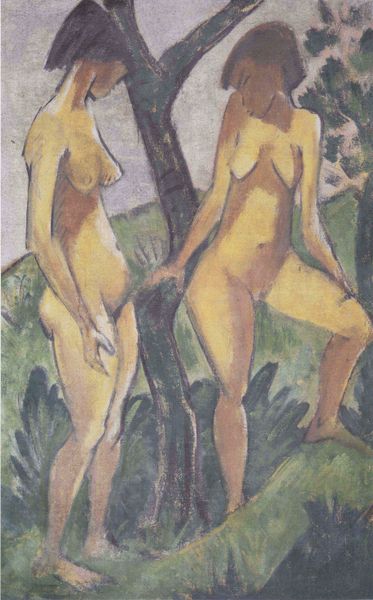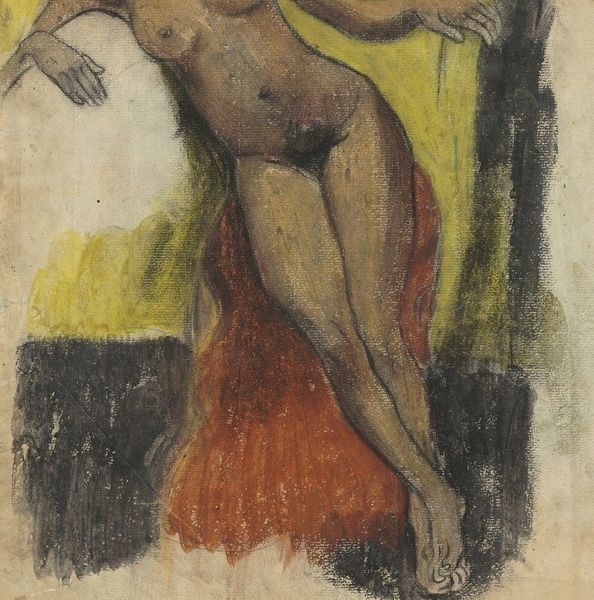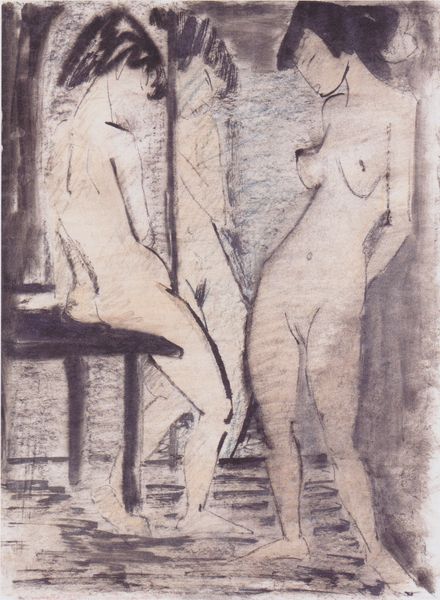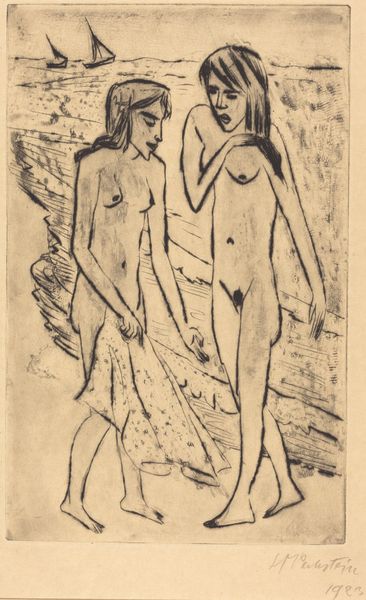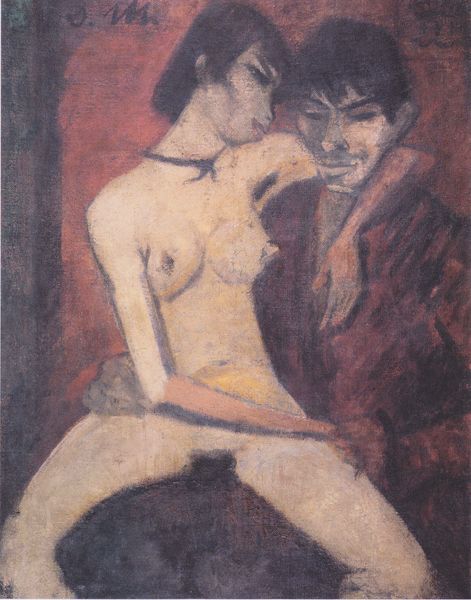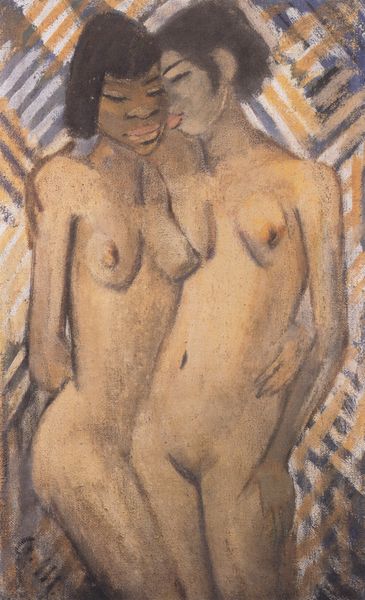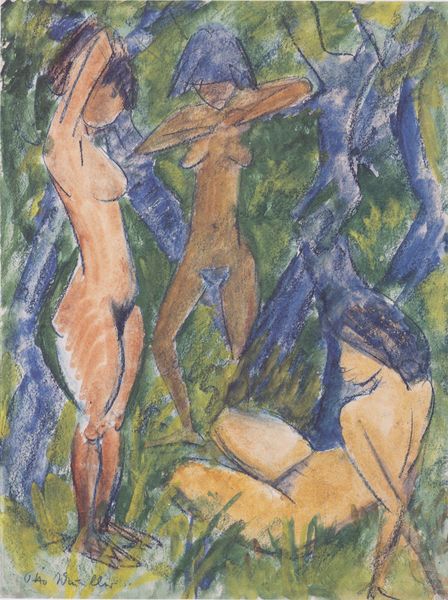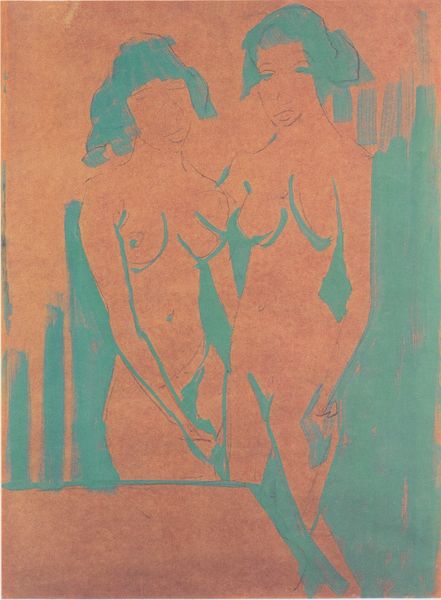
drawing, pastel
#
portrait
#
drawing
#
german-expressionism
#
oil painting
#
group-portraits
#
expressionism
#
portrait drawing
#
pastel
#
nude
Dimensions: 80 x 130 cm
Copyright: Public domain
Curator: I see an unfinished dream. Two female figures, emerging tentatively from a hazy, indeterminate space. There’s an aura of vulnerability here, like half-remembered forms shifting just beyond our grasp. Editor: You're right, there's a melancholic feeling to it. The palette, dominated by earth tones with touches of yellow and green, really adds to that muted, nostalgic effect, don't you think? Speaking of which, what can you tell us about this drawing? Curator: This pastel artwork is titled "Zwei Mädchen," or "Two Girls," crafted around 1920 by the German Expressionist, Otto Mueller. It is a notable example of Mueller’s signature style, part of his lifelong exploration of human figures in nature, focusing especially on the female nude. Editor: Nature is implied, right? Because what jumps out is the angular abstraction of what may be background vegetation pressing in on these nudes—which have a stark stillness despite all the textural dynamism. Is it just me, or is there a bit of a confrontational, perhaps even wary, presence about the model looking directly out at us? It unsettles me somewhat. Curator: That’s astute. Mueller’s Expressionism often used simplified forms to communicate complex emotions and psychological states. Notice how the artist employs this sense of both presence and estrangement, in keeping with the themes of alienation prevalent in Expressionist art and reflective of the post-World War I environment. Editor: Yes! And it feels very private, like an intimate scene almost inadvertently witnessed, but these female subjects still retain an almost totemic feel... it takes the naturalistic nude in a strangely ritualistic direction. This must connect, also, to broader anxieties of modernity—to destabilizing social transformations following the war? Curator: Precisely. Mueller, as a key figure in the Die Brücke movement, was profoundly concerned with expressing authentic experience and questioning traditional societal norms. We can certainly infer how he taps into a kind of collective consciousness. Editor: Thank you. It feels significant to leave with an echo of Mueller's era resonating even now.
Comments
No comments
Be the first to comment and join the conversation on the ultimate creative platform.

